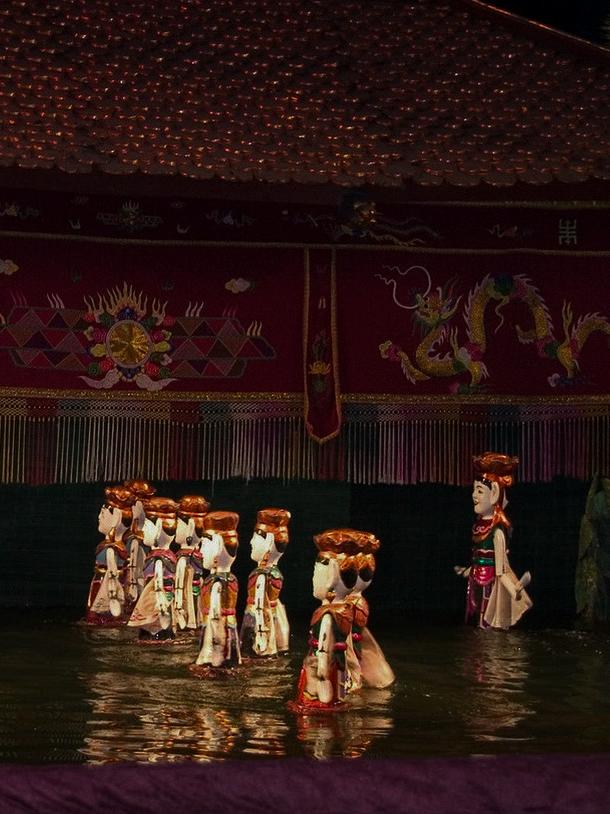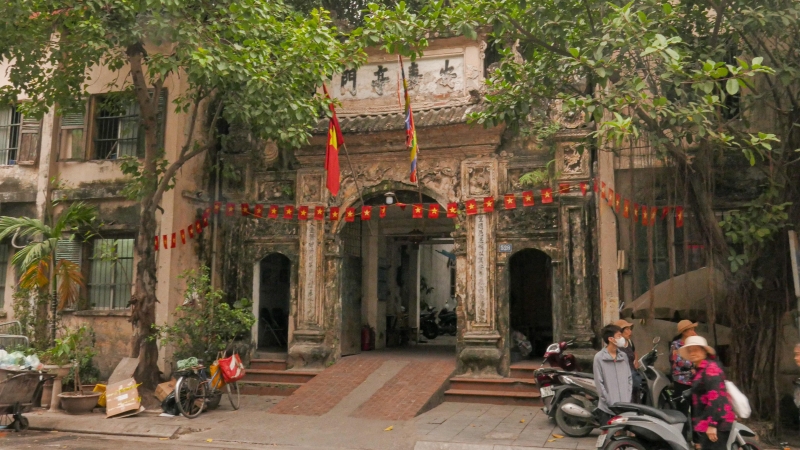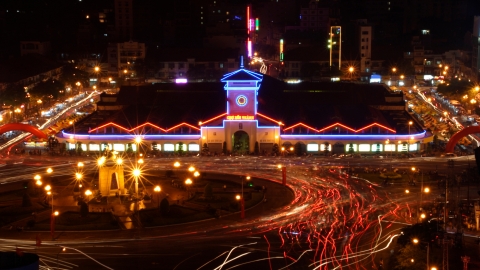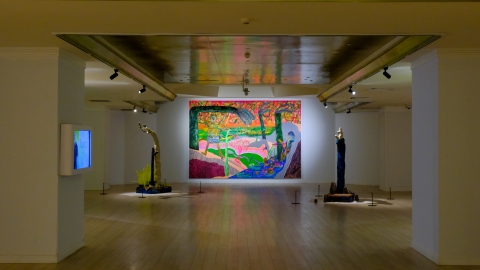Water puppetry, a charming and mellow export specialty
The sound of trumpets and drums resounded, the melodious singing of the ghosts peeped through the thin mist between the glittering surface of the crescent pond, the puppets were given life, quickly gliding across, appearing and disappearing under the curved shape of the water pavilion roof. Behind the sturdy pillars of the water pavilion, a cultural appearance appeared, like a vivid embodiment of the cultural voice of the North, of the legendary breath in the folk and wild history, lingering with a bit of magic, but not far from the consciousness of the human world.
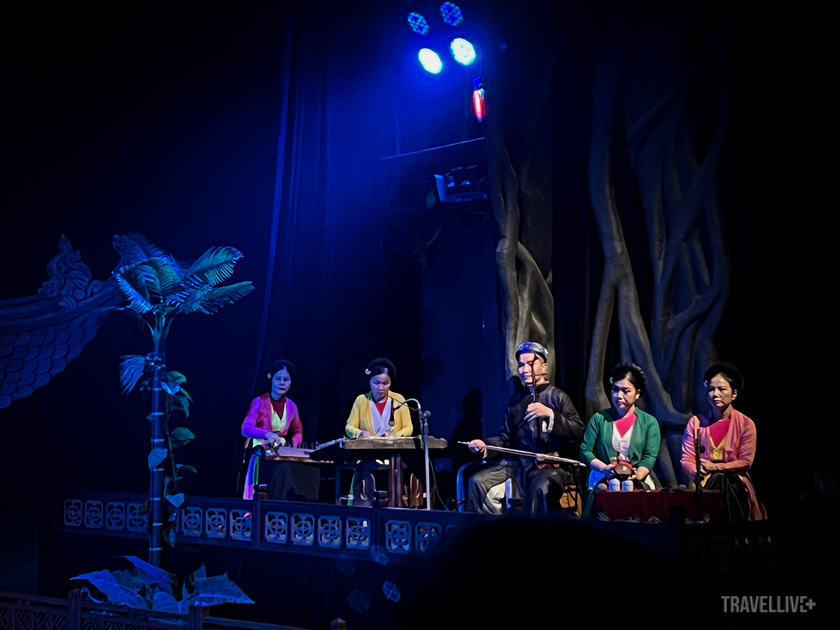
Perhaps, along with a bowl of pho, water puppetry also deserves to become a special export product full of flavor and charm. We have a series of stages that carry the soul of folk performances, but it can be affirmed that, in terms of art, water puppetry is a unique synthesis of folk art and traditional techniques.
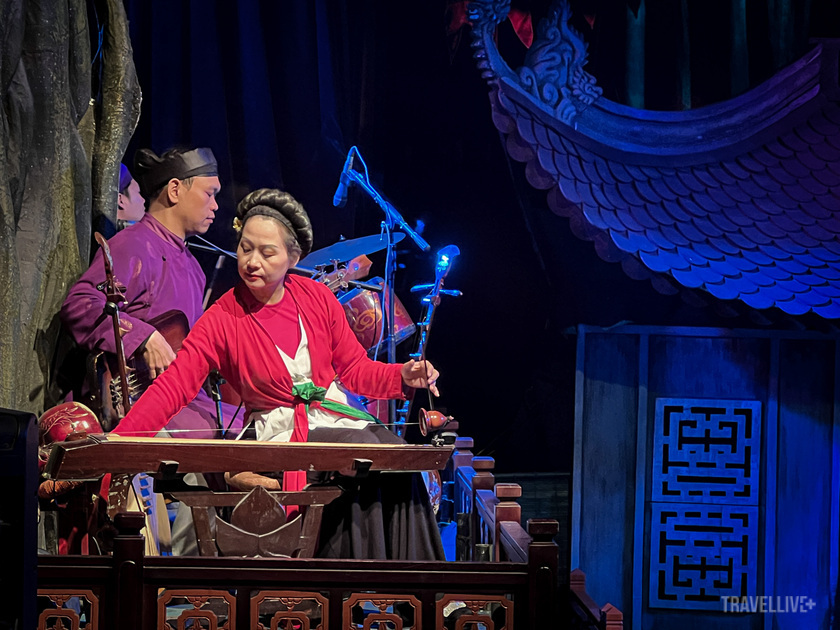
Water puppetry is a unique synthesis of folk art and traditional techniques.
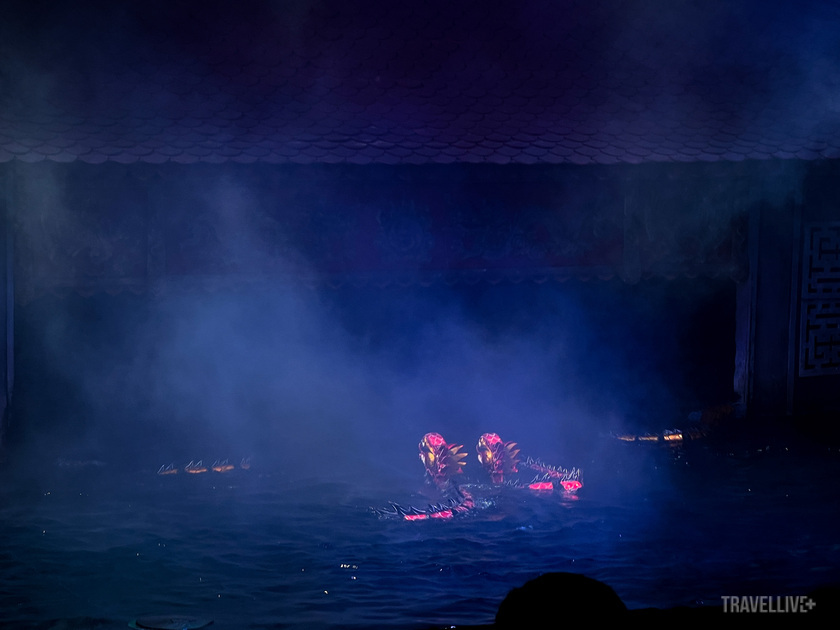
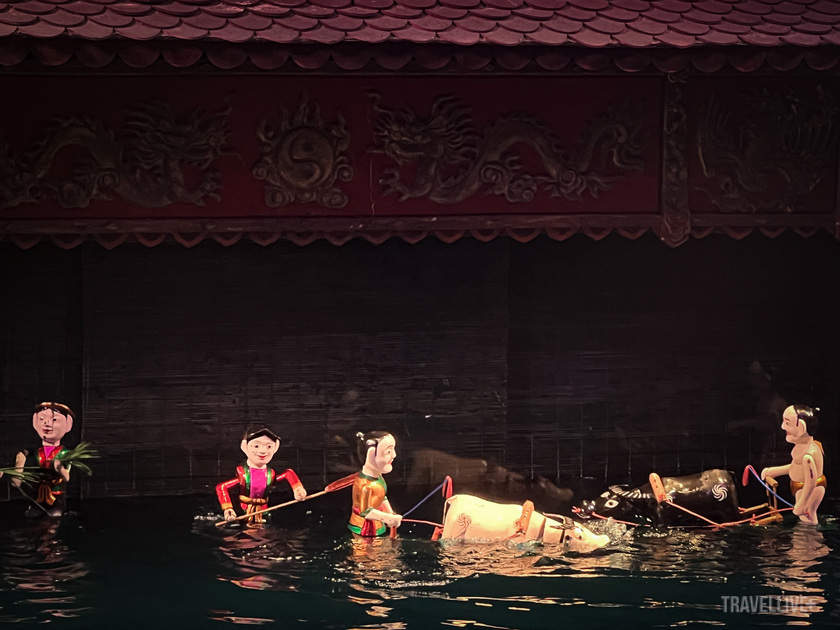
On the water stage, wooden puppets, a unique creation, use the inherently sturdy wooden material to recreate the soft and suppleness of culture, which culture, crystallized from the original lifestyle of the Northern villages, also has literary qualities, combined with the structure of idioms, proverbs, folk songs, and folk songs typical of craft villages. The literary qualities in water puppetry are comprehensive, open, and free from the fixed constraints of only one form of poetry and literature. The puppets, painted in red and gilded with gold, are rustic, meaning beautiful enough but close, not too lofty.
When it comes to folk performing genres; scripts, literary language and the art of reflecting the inner self through acting with dialogue, the manipulation is emphasized the most. But in water puppetry, what attracts the audience is the physical actions of the puppets. The puppets stand in the middle, becoming an indirect element that conveys the connection between people. Therefore, water puppetry ignores the physical performances, but requires a skillful and talented way of expressing the intermediary (puppets).
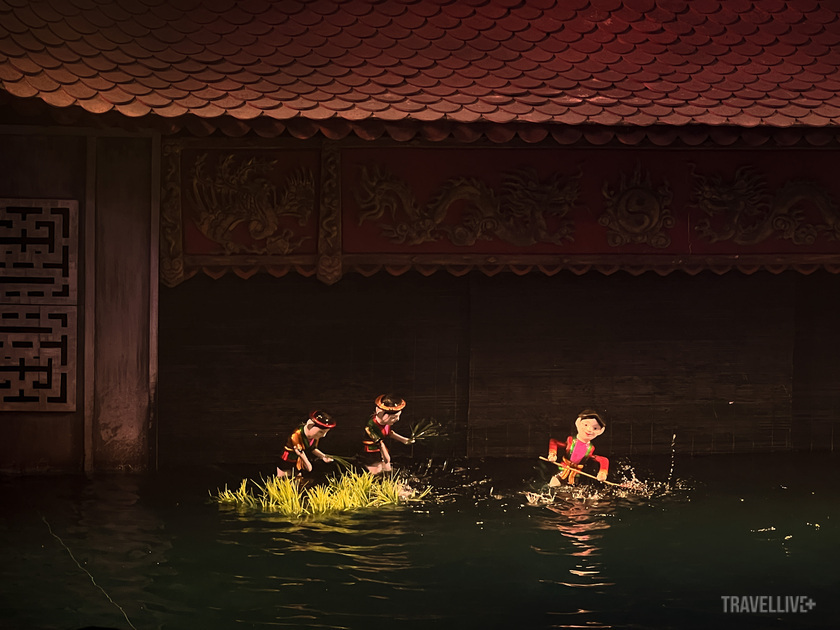
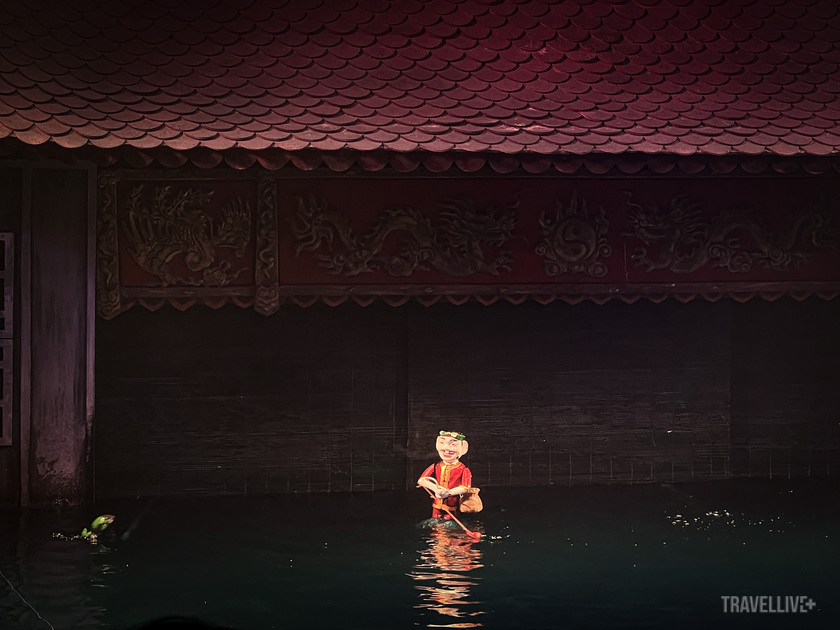
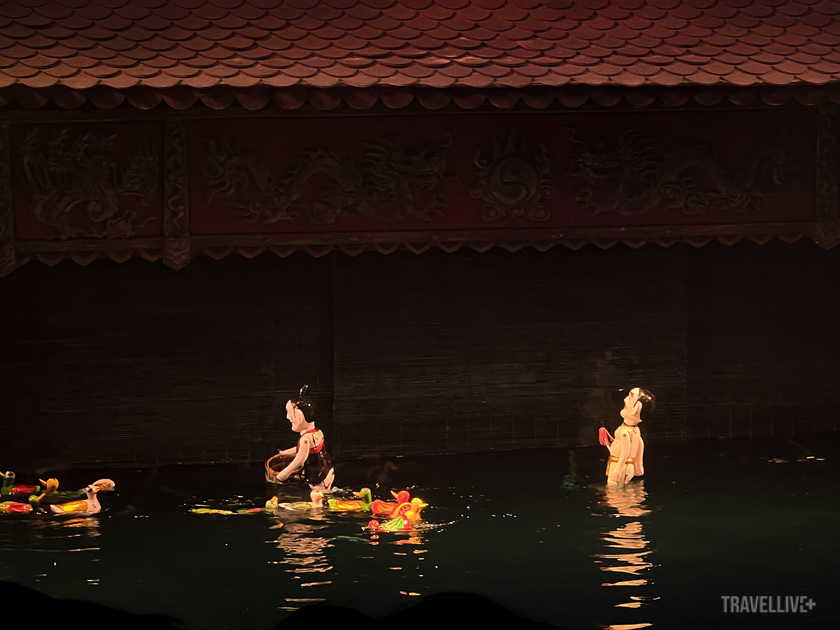
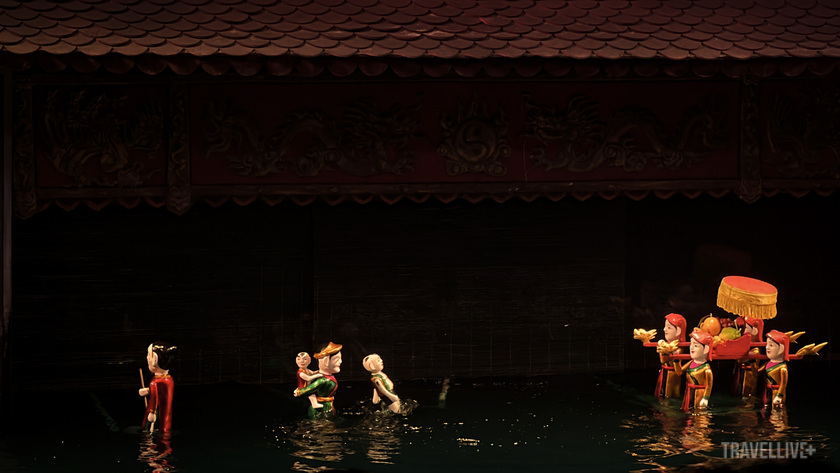
In water puppetry, what attracts the audience is the puppet's physical actions.
Humanity is expressed in a more metaphorical way, when all objects are dematerialized, taking on the role of regulating their natural rhythm. Even when more developed, with literary intonations, the puppets' physical actions are what capture the soul of the whole play. Agreeing that language adds color to this performance genre, the essence still lies in the relationship between the artist (expression) and the puppets (means of expression). It is the perfect combination of human imagination, with inanimate objects that act like real things.
At Thang Long Water Puppet Theatre (Hanoi), which welcomes both domestic and foreign visitors, the water puppet stage here spans visual grammars shaped by the sensitive perception of humans. When every script is freed, every word is reduced, leaving room for the rich imagination of both the performers and the audience, it accidentally becomes the most ideal form of theater, returning all feelings to the initiative of each audience member.

Therefore, water puppetry is not only a unique feature of the Northern community behind the bamboo fences, but has also been skillfully transformed according to the diverse flow of many ethnic groups in different cultural territories. Streamlining the sophistication of the script and language, from which everyone can see that the content conveyed through figurative language has a wider universality than verbal interpretation, reaching higher and further to diverse identities around the world.
However, the mark of water puppetry that we can recognize today was in the reign of King Ly Nhan Tong in 1121, on the Sung Thien Dien Linh stele located at Long Doi Pagoda, Doi Son Commune, Duy Tien District, Ha Nam Province. The stele of Doi Pagoda recorded that people performed "rope climbing puppetry" to celebrate the King's birthday. Therefore, perhaps in the past, rope climbing and puppetry were often performed together. Rope climbing is perhaps the father of modern circus.
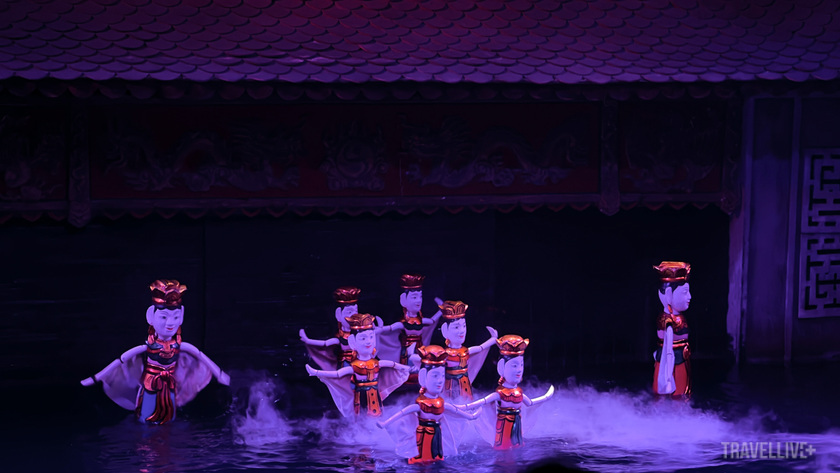

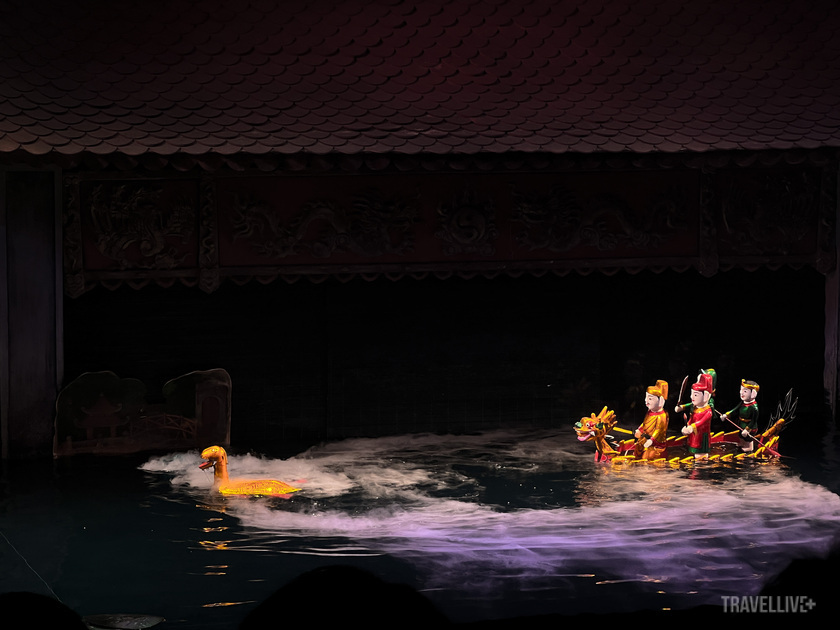
The essence of water puppetry
The intersection between circus and puppetry is the strangeness, the paradox, the element that attracts the audience to the stage. The puppets move, dance, sing on the water without the audience knowing how they move. Amidst the vastness of the water, the amazement appears layered in the mist of illusion.
The thrilling aspect is expressed in the unexpected appearance, leaving the audience's judgment and imagination. The paradoxical aspect is also the strangeness and uniqueness. On the circus stage, the actor can balance on the rope, there are many variations... the paradoxical things combined in these two art forms, are the lever for the feeling of excitement, stimulating the curiosity to learn, arousing the thinking to explore things that are inherently difficult to explain.

The intersection between Circus and Puppetry is the strangeness, the paradox, the element that attracts the audience to the stage.
The joy between the aspect of surprise in the art of water puppetry, expressed through the laughter and joy of the audience, the final conclusion to the success in all types of performances, is the emotion in the stands. The content in that laughter and joy is the beauty of the excitement in the soul of the audience combined with the bustle of the spirit of water puppetry. That is still the beauty of folk theater art, not lacking the aesthetic aspect of balance and harmony in the composition, sound lines, rhythm, but still full of the flavor of joy in life.
Hey guys!
Thang Long land with a thousand years of history
How many generations have preserved this ancient capital?
Happy opening today
Drums sound, flags flutter, fluttering all over the sky…”
Uncle Teu - the initiator, the teacher, an important political entity holding the hands and feet of each audience member entering the magical space of water puppetry. Why not Miss Teu, Ms. Teu... but Uncle Teu - a man? Puppet sculpture was born from the art of shaping, carved by manual hands, with the thinking and creative minds of the leaders of the cultural space system of villages in the Red River Delta. Village communal house carving and water puppetry carry the principle of painting in the aesthetic emotions of liberal, strong, square, rustic but extremely lively and delicate men.
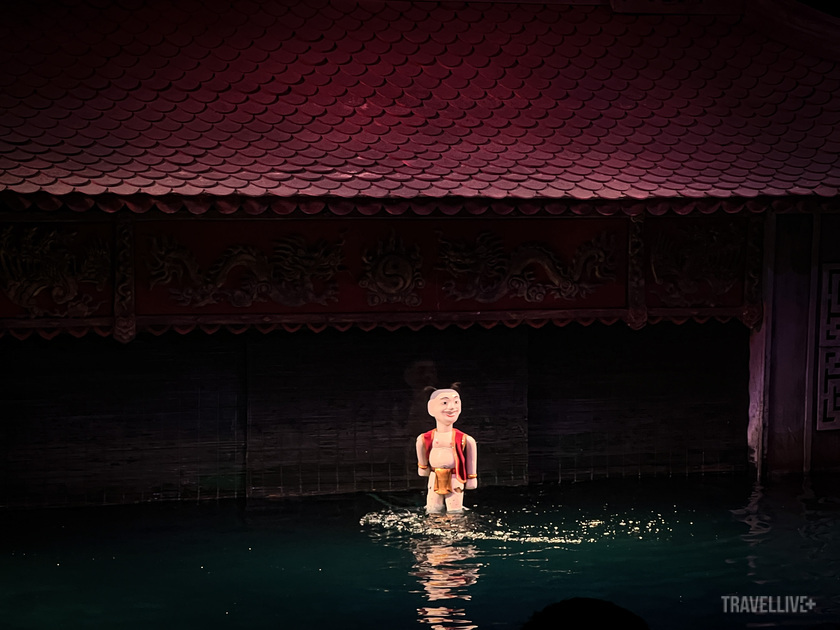
Uncle Teu - the initiator, the teacher, an important entity holding the hands and feet of each audience member as they enter the magical space of water puppetry.
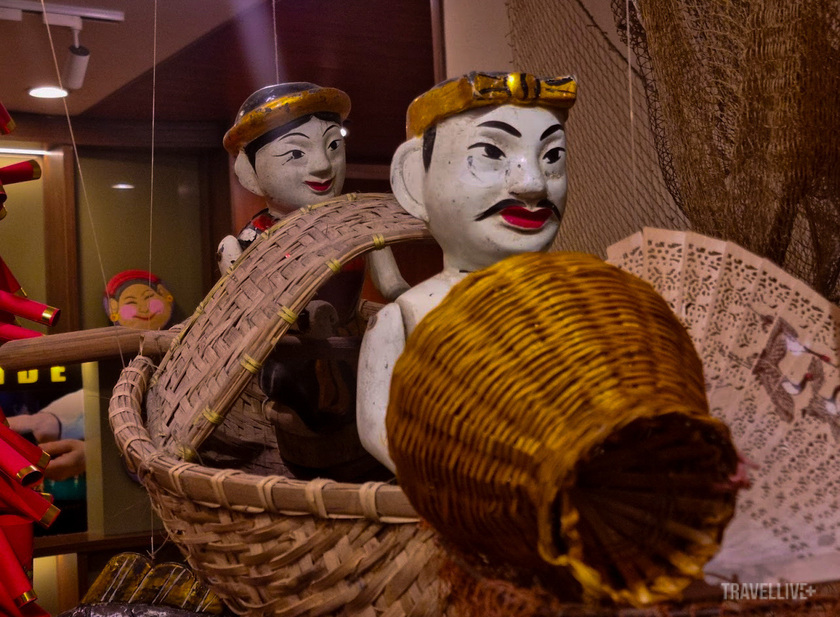
The masculinity in water puppetry is clearly expressed in the characteristic of "keeping secrets" of the profession and the esoteric nature is one of the outstanding characteristics of water puppetry. The role of men in water puppetry is built on the cultural life of the village community, a unique creation of the "muddy-footed" male farmers. The value of sympathy and common destiny flows along the cultural stream of the quintessence of people - men of the Red River Delta, the key to the soul of the land, the soul of the water, the soul of the rice, and the soul of the village. From the natural and social foundation, creating the value system of Water, land, village, people, is the culture of Heaven's time - Earth's advantage - Human harmony, without which, there would be no Vietnamese water puppetry.
The core of water puppetry, in addition to puppets and performance techniques, must be discussed the presence of sound. Sound in water puppetry is a combination of folk music, folk songs and folk dances. In the early days of water puppetry, only percussion existed. The sound of percussion and drums in folklore is a connection between the sounds of heaven and earth, the sound of puppets, community meetings... Now entering folk performances, to innovate and add, with a variety of big drums, small drums, rice drums, wooden fish, cymbals, gongs... layers of sounds blending together near and far, vibrating the surface of the water, creating an auditory attraction for both performers and viewers.
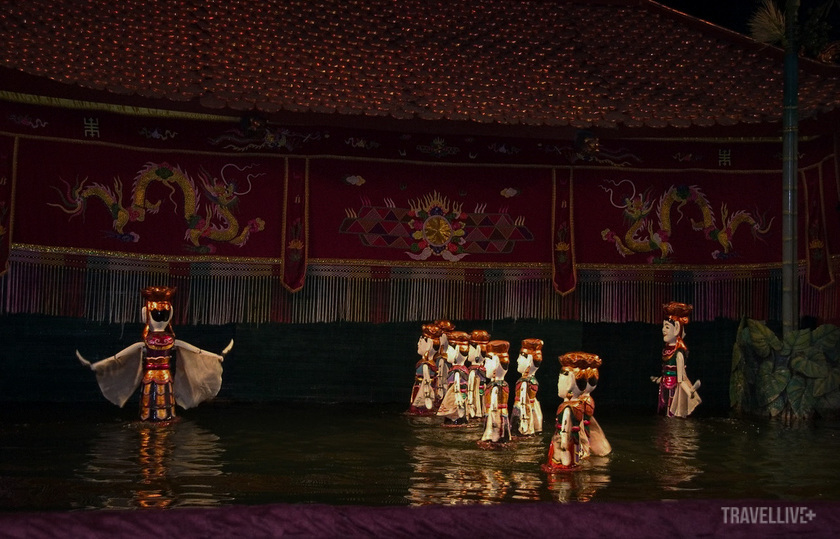
Later, when incorporating Cheo in the development process along with music, people also added actors with good timbre to express the teachings through Cheo melodies. Music in puppetry is a way to thoroughly express the thoughts and feelings of the inanimate puppets that sometimes the dialogue cannot fully convey. Music also connects the performances together, connecting the scenes. Sometimes intense, sometimes leisurely, leading the audience to delve into the potential values of this unique folk art.

Talented artisans' hands behind the curtain
Water puppetry is not confined to a framework or a definition. It is like the breath of the countryside, like the gentle laughter in the harvest days. The wooden puppets, simple but lively, are not just shapes, but stories, pieces of memories that each craftsman has entrusted, has lived with. In each dance step of the puppets, there is the echo of the land, the breath of the countryside, the eyes of the farmers who still wait day by day for a good harvest.
Every time the water puppets speak, it is like a time when old things are reawakened, slowly, simply, but still. Not ostentatious, not elaborate, water puppetry is as natural as underground water, spreading, penetrating deeply, leaving a simple but unforgettable mark in the minds of the audience. Amidst the hustle and bustle of the times, water puppetry is like a familiar bridge, for us to return, to listen to the sound of culture, of a flow that has existed for many generations, quietly but persistently.





